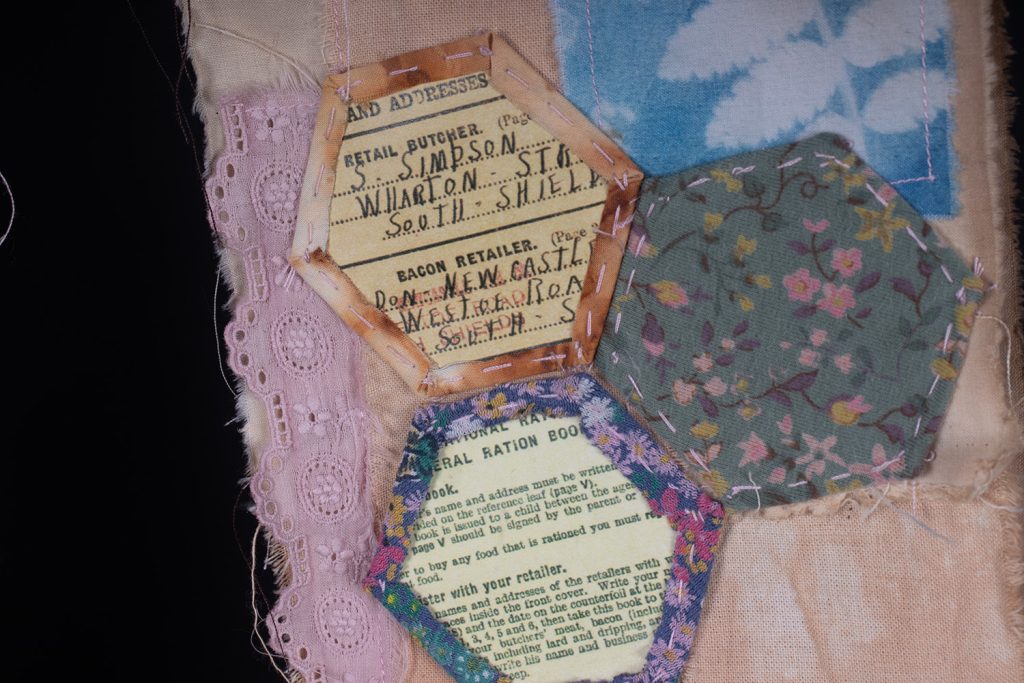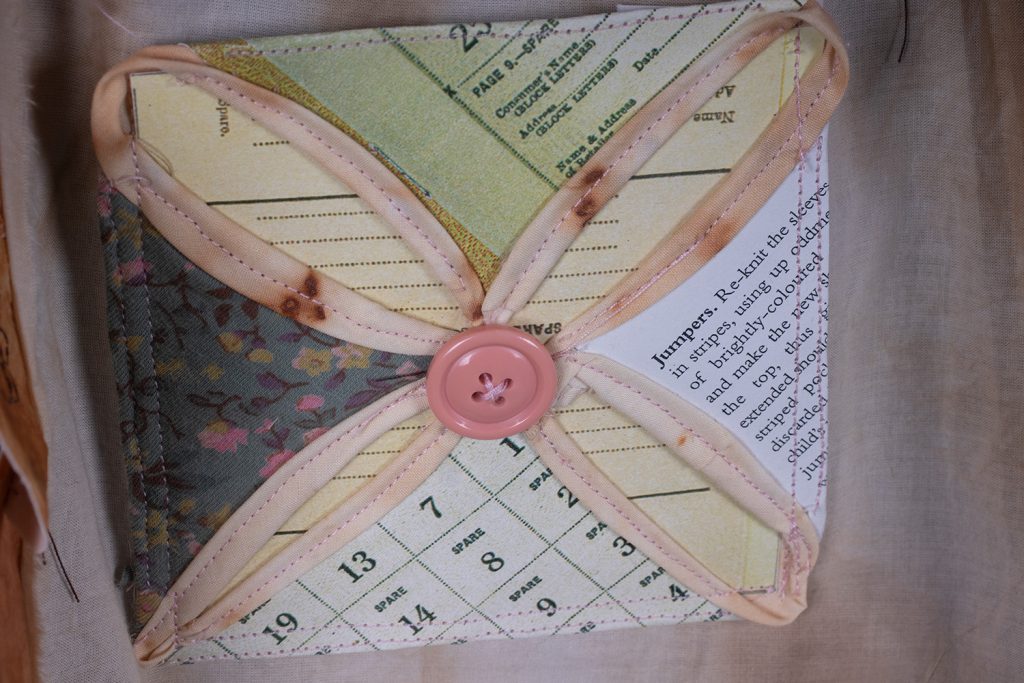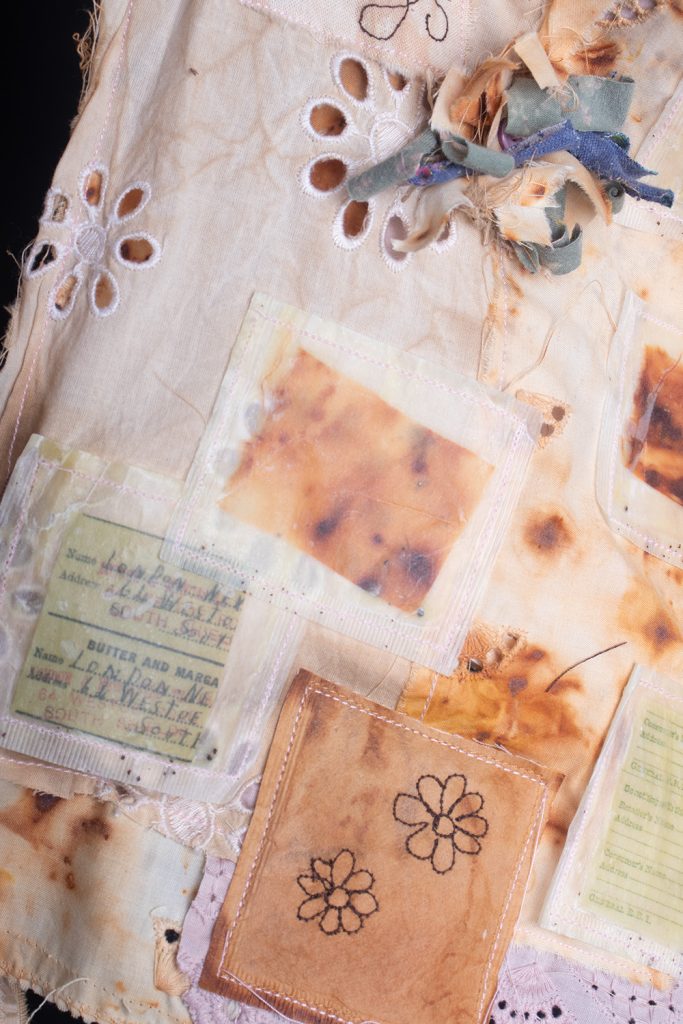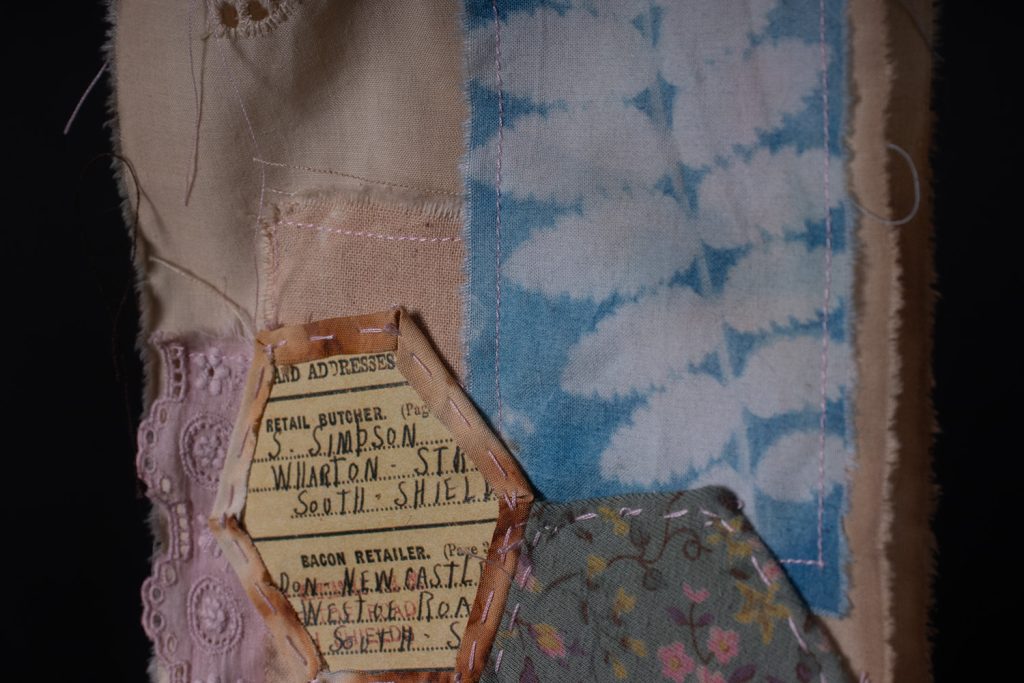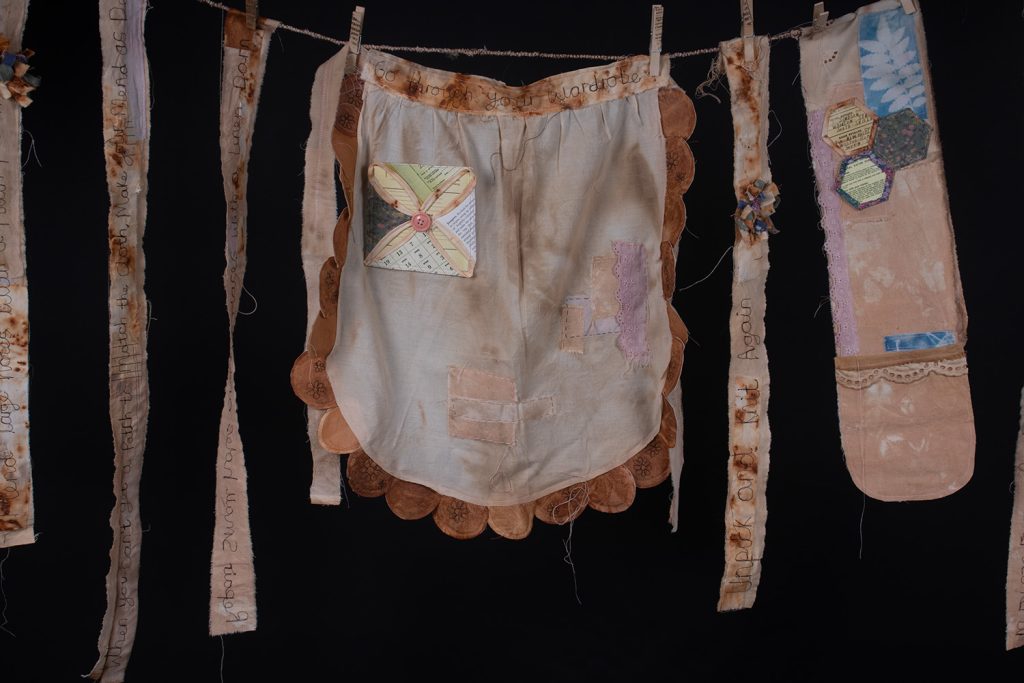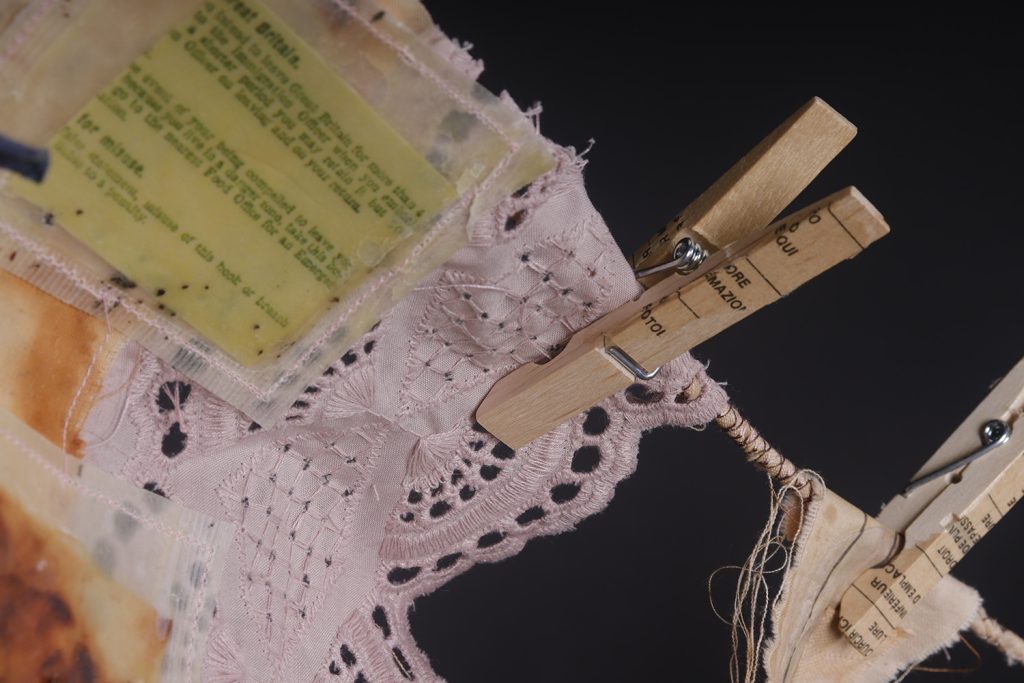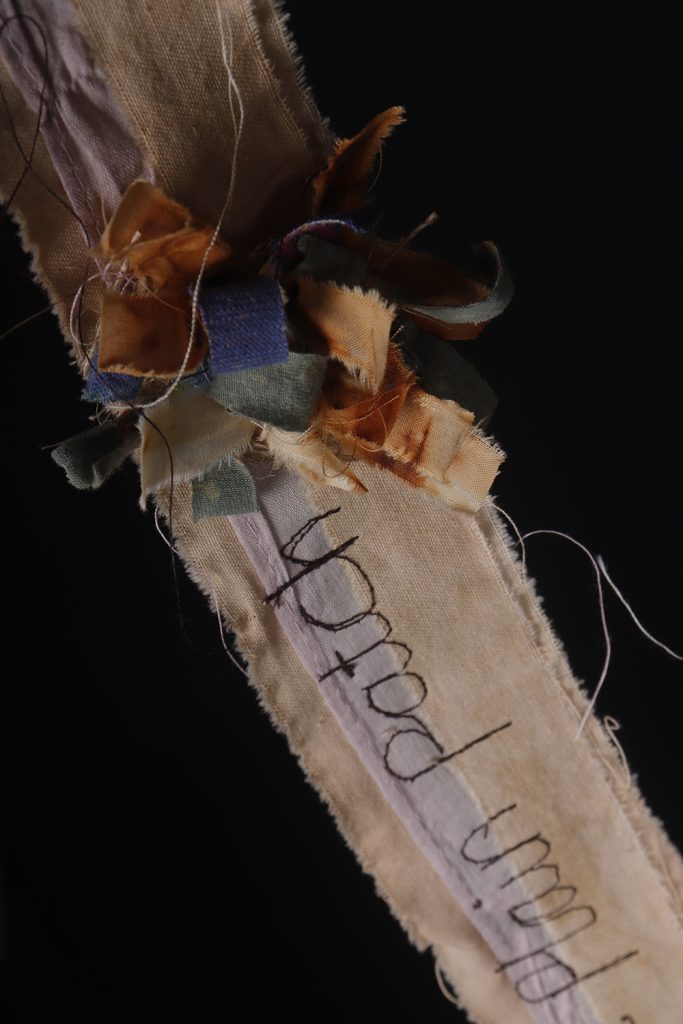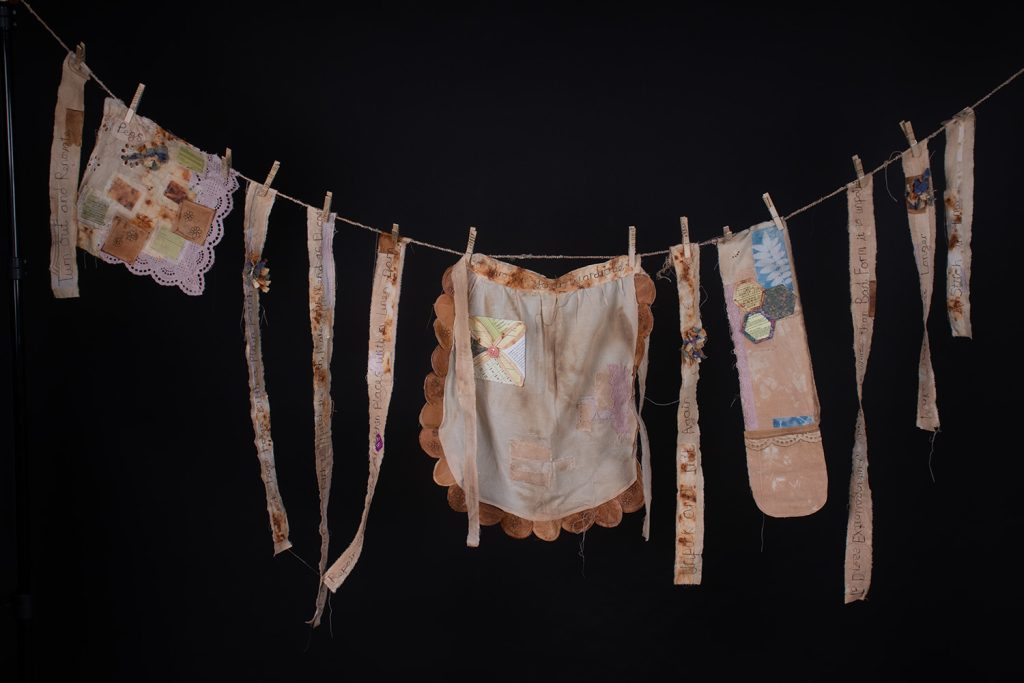A-LEVEL TEXTILE DESIGN 2025
ANMOLPRIT KAUR | ERIN McCABE | EVE ORAM | GRACIE ROBERTS | MYA-LEE ROUND | ARWEN WILSON
A-Level textile design encourages students to work with a wide variety of skills and processes across the fields of textiles, fashion and interiors. This includes printed textiles, constructed textiles, embroidery, fashion construction, weaving and fabric manipulation. Learners are introduced to different techniques which they are then able to develop into personal final work. This can be clearly seen within the variety of imaginative outcomes produced this year.
Learners are encouraged to explore both historical and contemporary techniques and processes and to support their work with research into a range of suitable artists, designers, and trends. They are prepared for industry or Higher Education and all the learners from this year are continuing by pursuing degrees, employment or progressing onto the art foundation diploma course here at Dudley College.
I hope that you find the work inspiring. I am very proud of what the learners have achieved this year.
Clare Buchanan, A level Textile Design Tutor
Anmolprit Kaur
Through my project I explored the theme of spring contrasting with the season of winter. I looked at how the season of spring is slowly disappearing due to the climate change as the transition of the weather is starting to go from the cold winter weathers to the humid summer temperatures skipping the warmth of spring.
To develop this idea, I wanted to look at a form of ‘solution’ to this by creating a garment suitable for both winter and spring weathers by utilizing layers of thinner fabrics combined with thicker fabrics and colours of spring to showcase this. Moreover, by creating different layered garments which can be easily added and taken off the garments would be functional in both weathers.
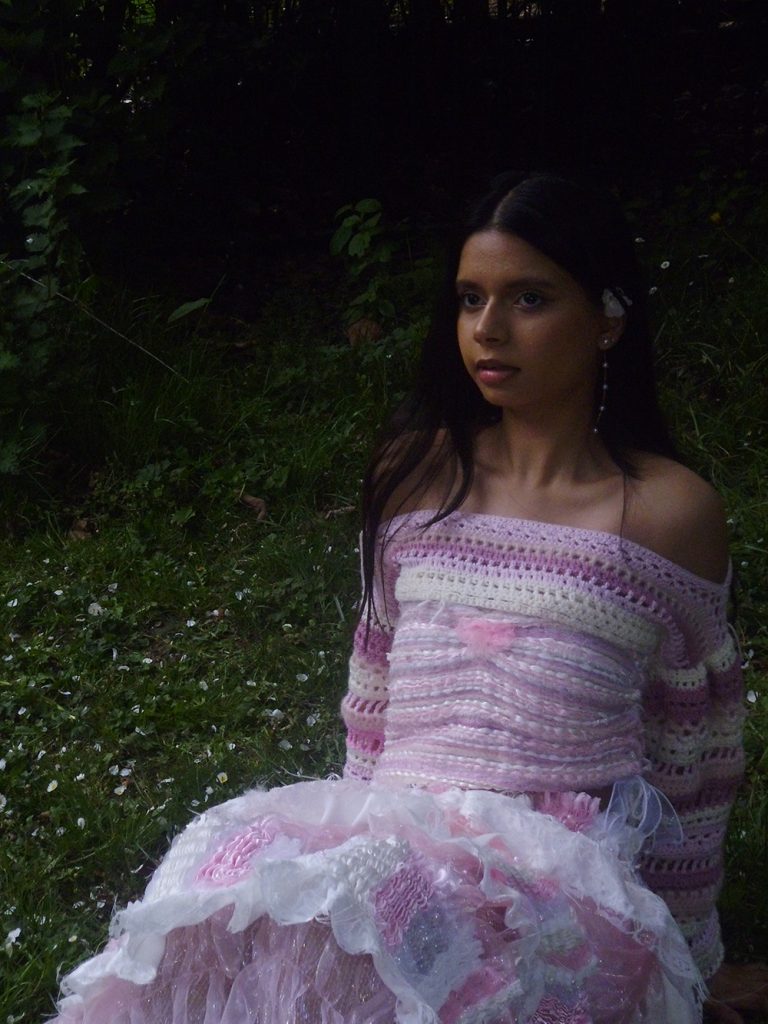
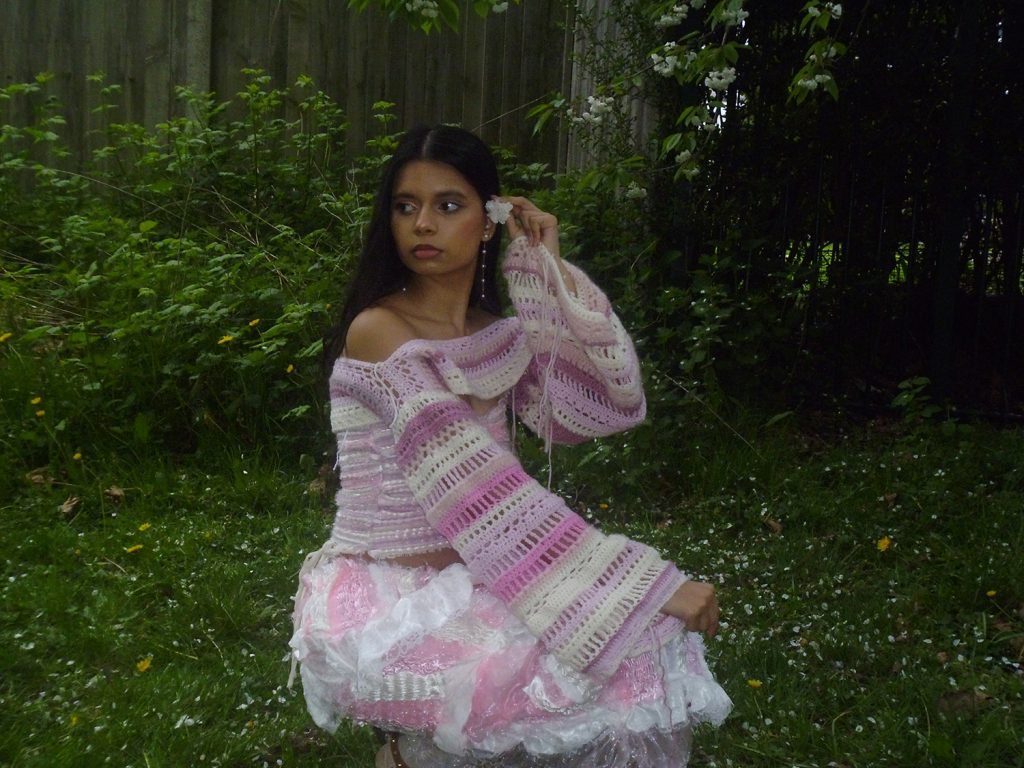
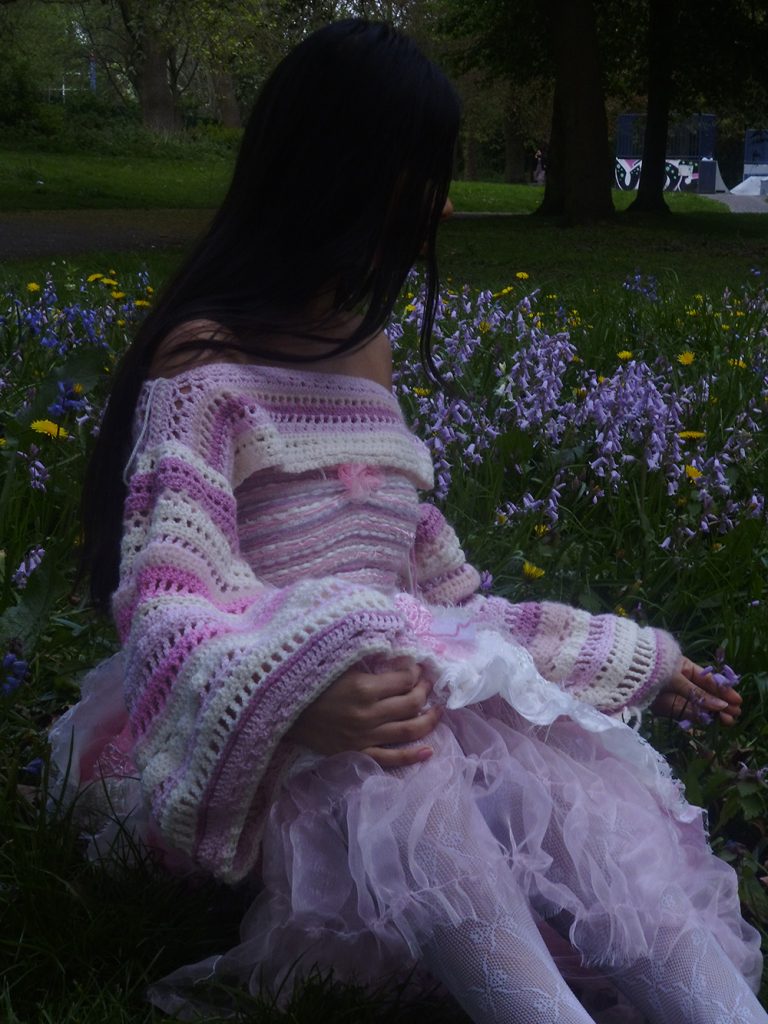
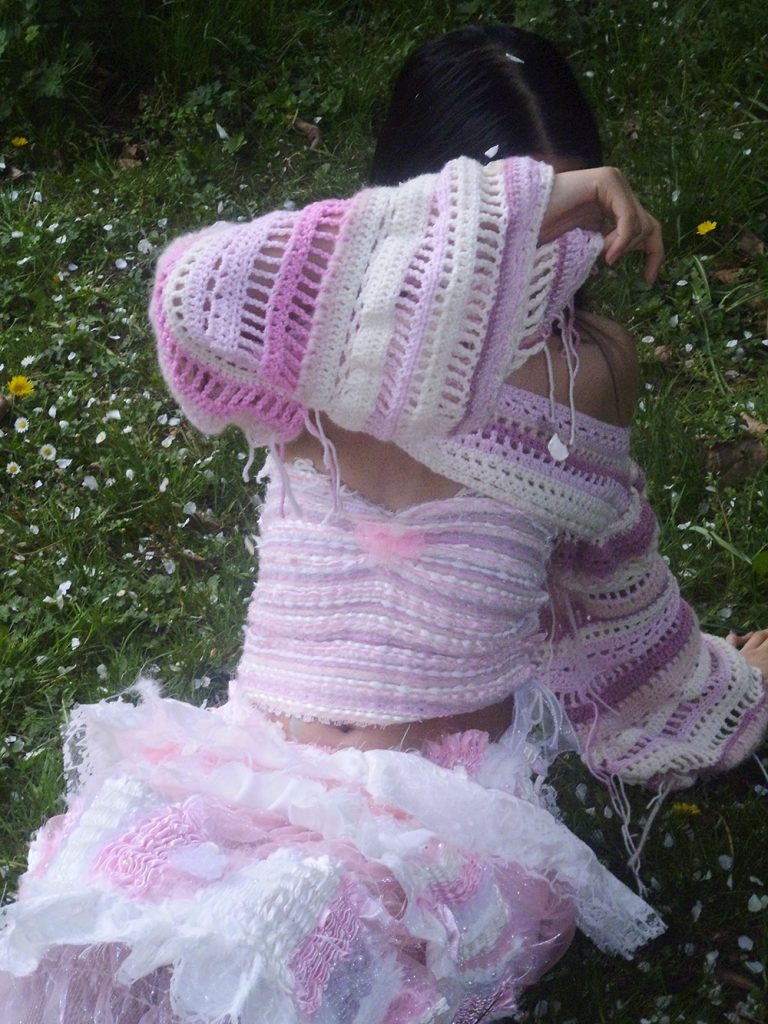
Erin McCabe
My component one topic is Urban and Rural. This topic came from my love of streetwear and subcultures such as grunge and the fashion found within these further induced the idea of urbanism. Rural came from my love of nature and the impact which urban fashion has upon the rural environments. This was the key focus of my project to explore the differences and also to find a solution to sustainable urban fashion.
To represent urban style, I chose denim as my material, the brown on the jumper came from earth tones such as tree bark. I weaved denim through my knit to represent how these ideas can be complimentary. My garment is fully sustainable as it is made from secondhand materials. The silhouette of the garment was inspired from the 90s grunge scene.
wanted to create a dramatically oversized jumper to reference the style of grunge singers such as Kurt Cobain.
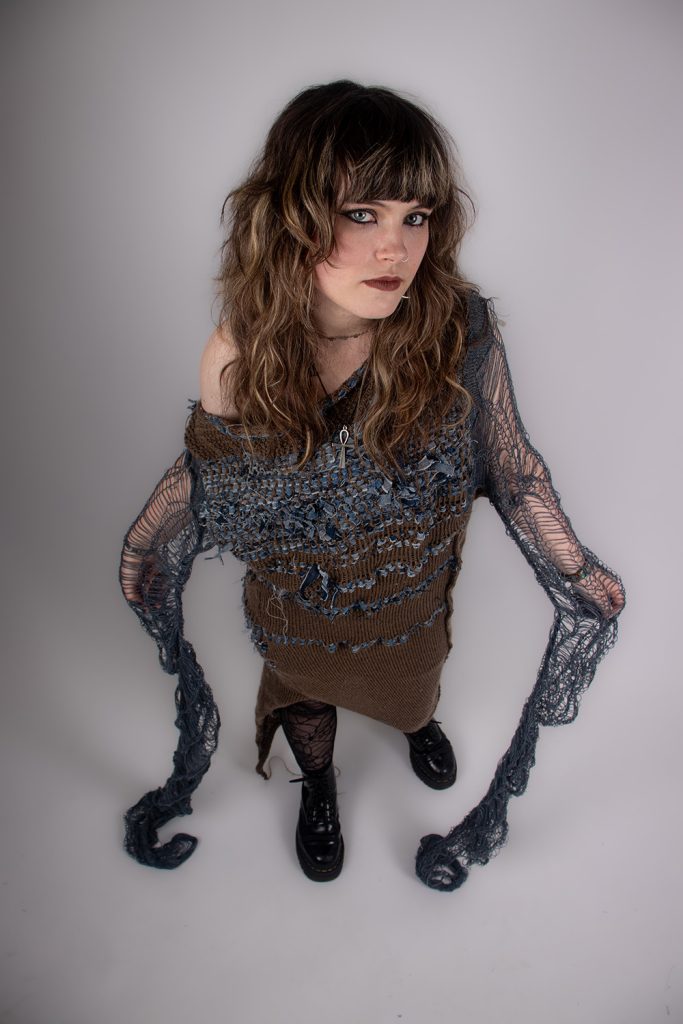
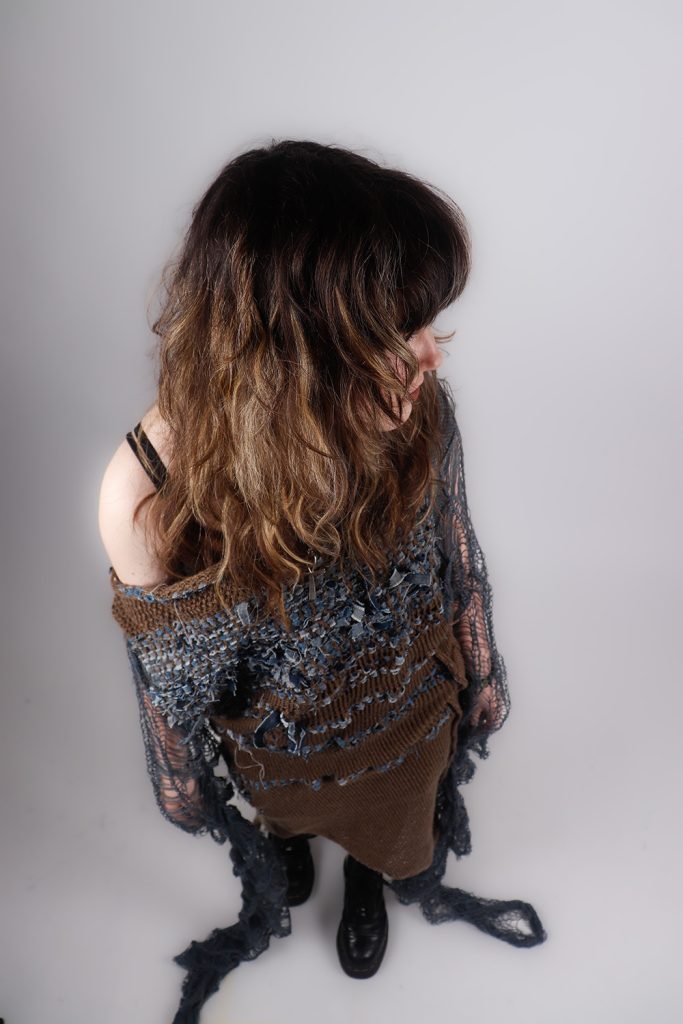
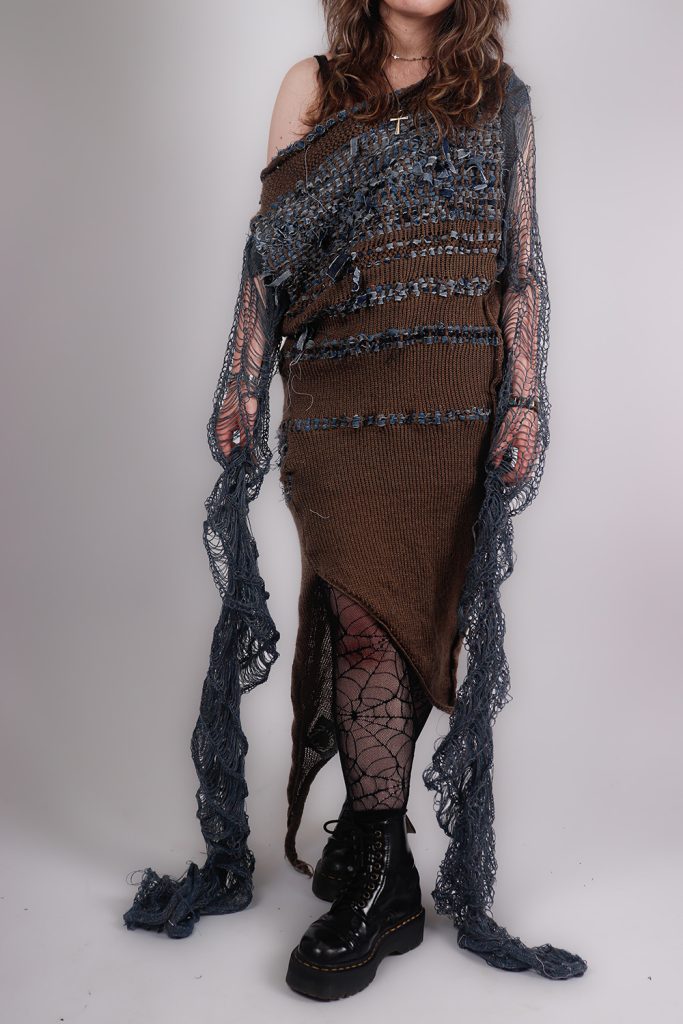
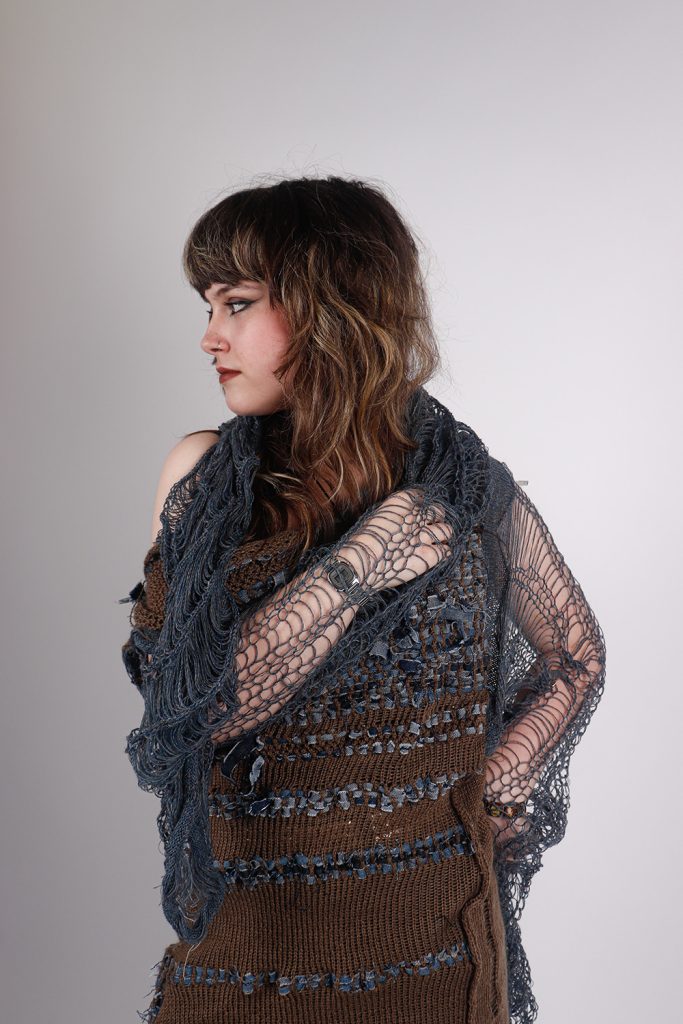
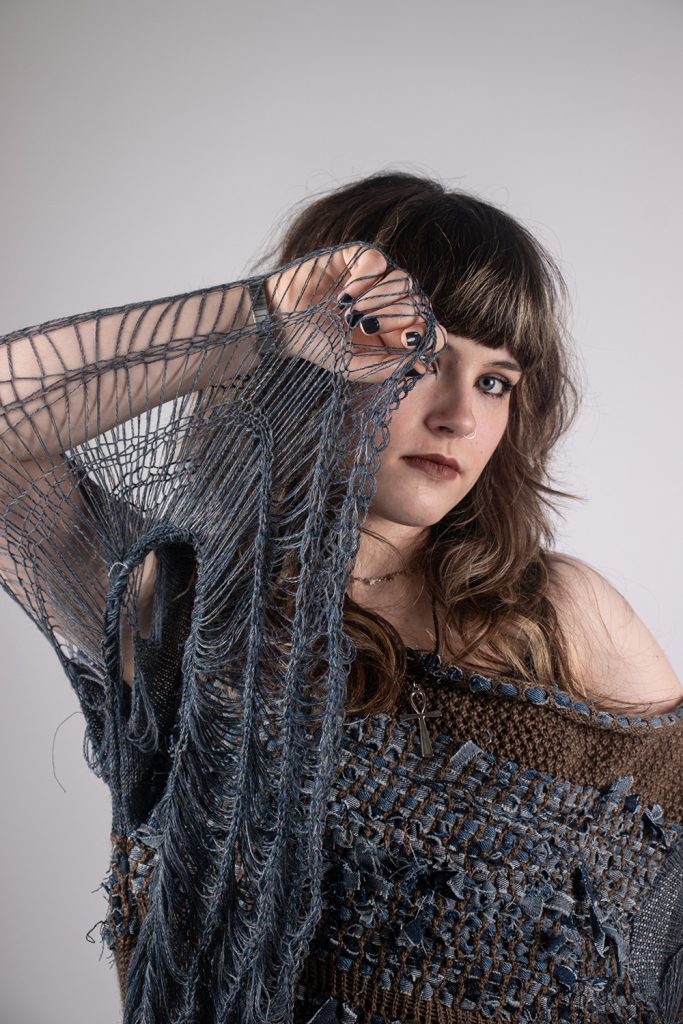
Eve Oram
This project is themed around jellyfish and inspired by their vibrant colours and patterns. The piece is a 3-piece set including a skirt inspired by the body of a jellyfish, slash and stitch arm cuffs and a beaded top with smocked/ stitched fabric inside.
The patterns on the skirt are inspired by pollution and include bubbles made from a paper straw, dyed bubble wrap under a heat press and dyed string. The inside of the skirt was stuffed with recycled plastic bags. The outer layer of the skirt is made from organza which shines which reflects different colours in the sun mimicking neon jellyfish.
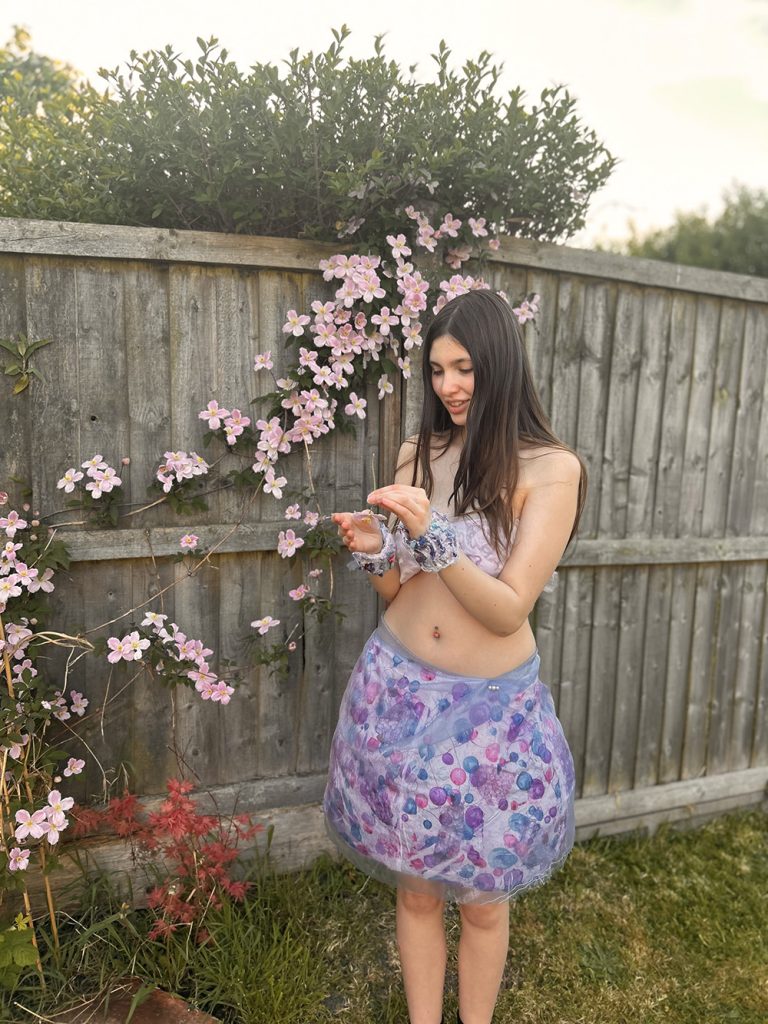
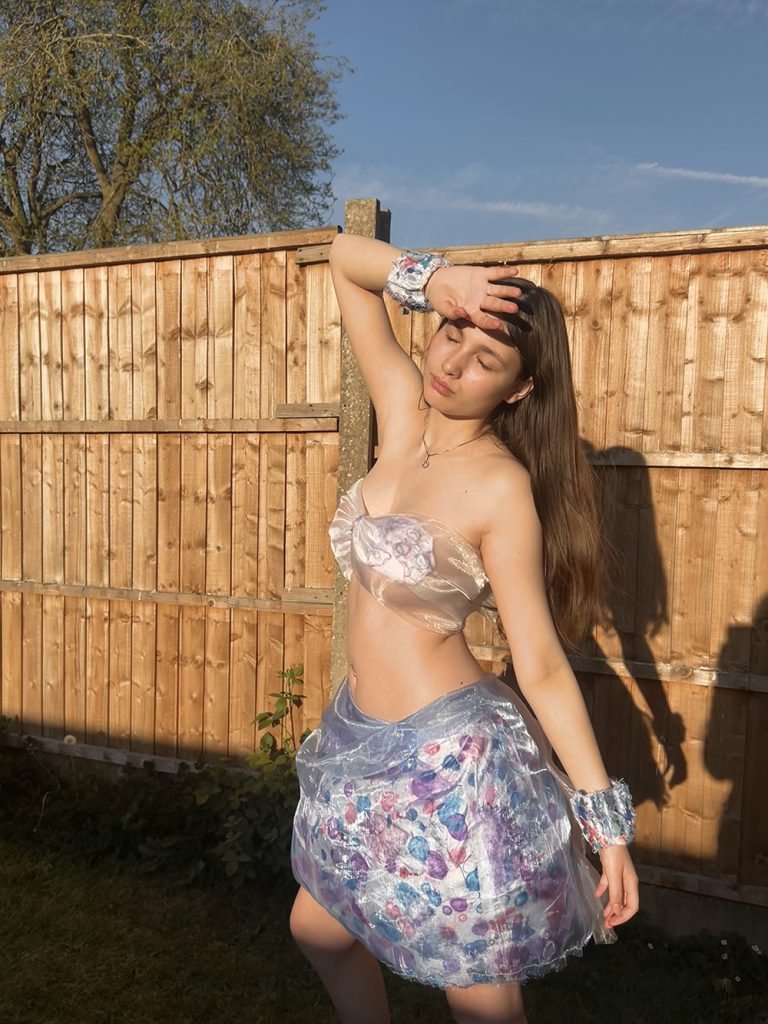
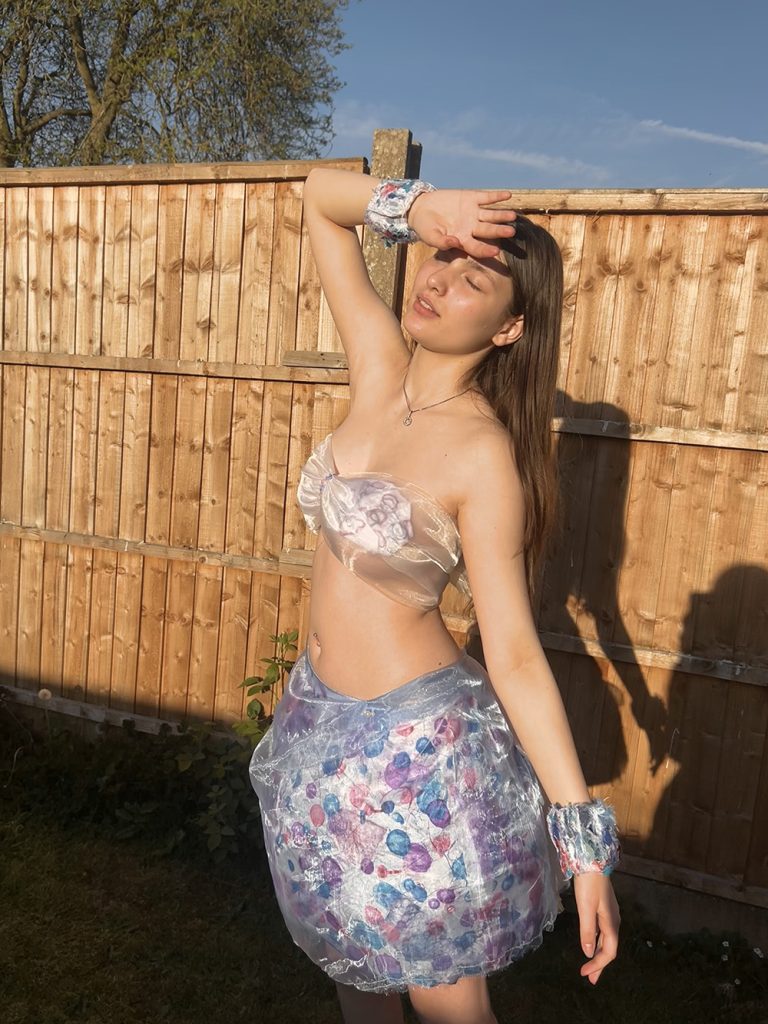
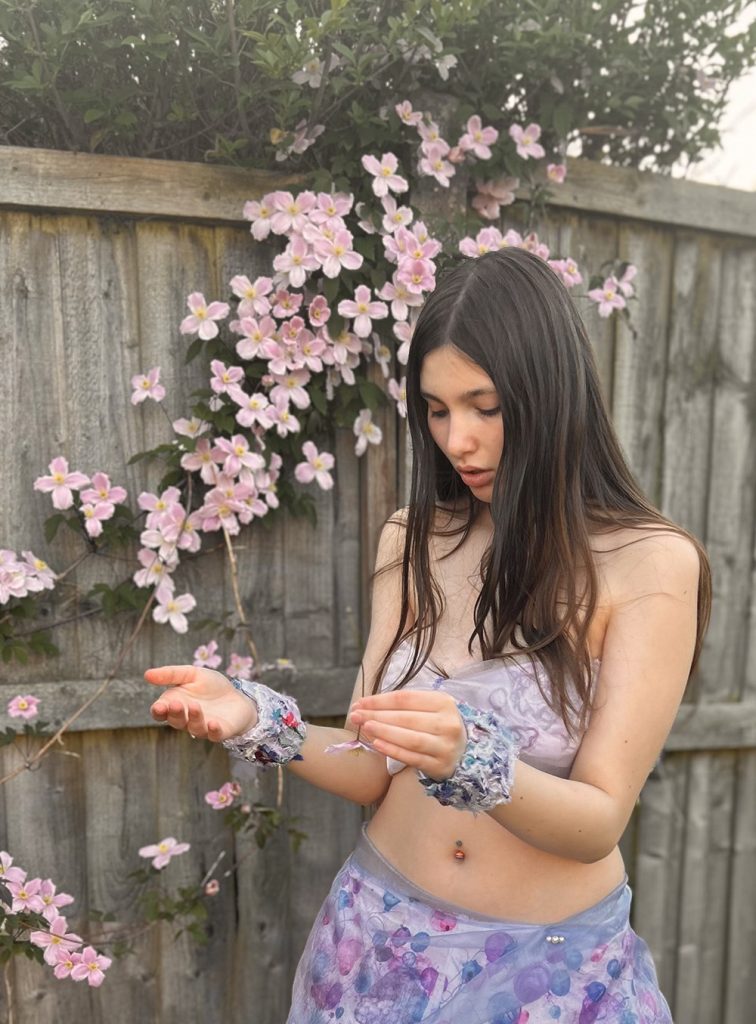
Gracie Roberts
For this project I explored the use of recycled materials, experimenting with ways of reusing and upcycling to promote ideas of sustainable fashion and more thoughtful design. I used a combination of everyday recyclables like plastic bags mixed with old clothes, of which I focused on my use of denim, sourced from old jeans.
For this I was inspired by the ethos of Maison Margiela’s spring 2020 ready-to-wear collection, where designer John Galliano created and used a concept he termed “recicla”, which focuses on giving garments a new life through restorative design, each item in the collection was created from second-hand garments.
I was also inspired by the silhouette and use of raw weaved edges from Viktor and Rolf’s “vagabond” collection from autumn/winter 2016, in this collection they used scrap fabrics from past collections and worked them together in a new way.
experimented with various techniques to combine as many scraps of fabric as possible, focusing on maximising my use of materials and ensuring my project was entirely zero waste, I concluded by using weaving as well as taking inspiration from the creation of rag-rugs and using both within my final piece.
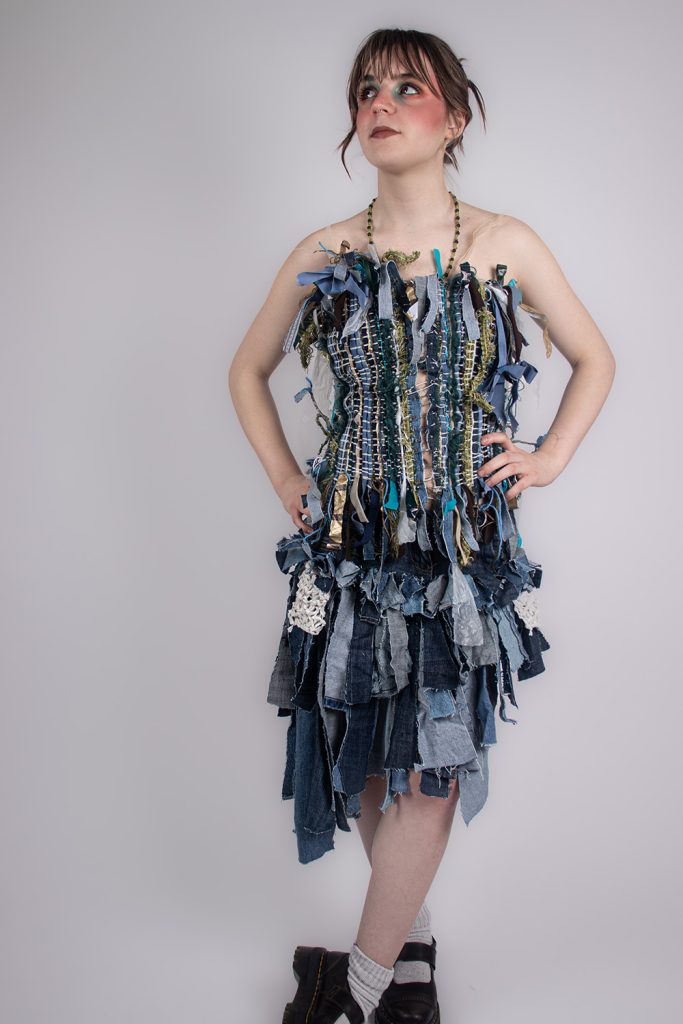
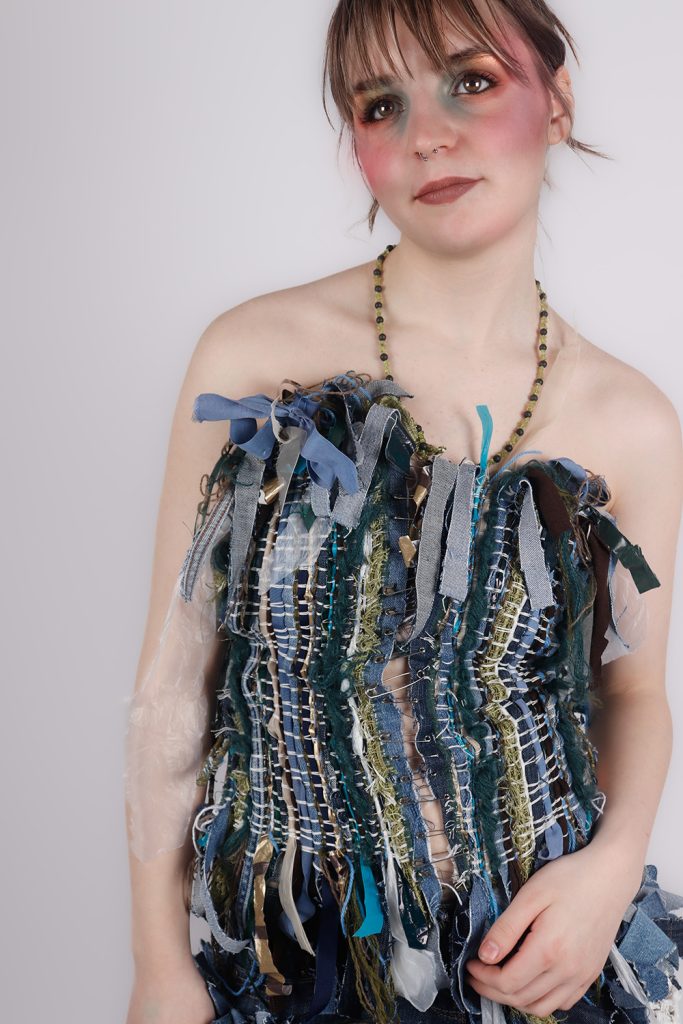
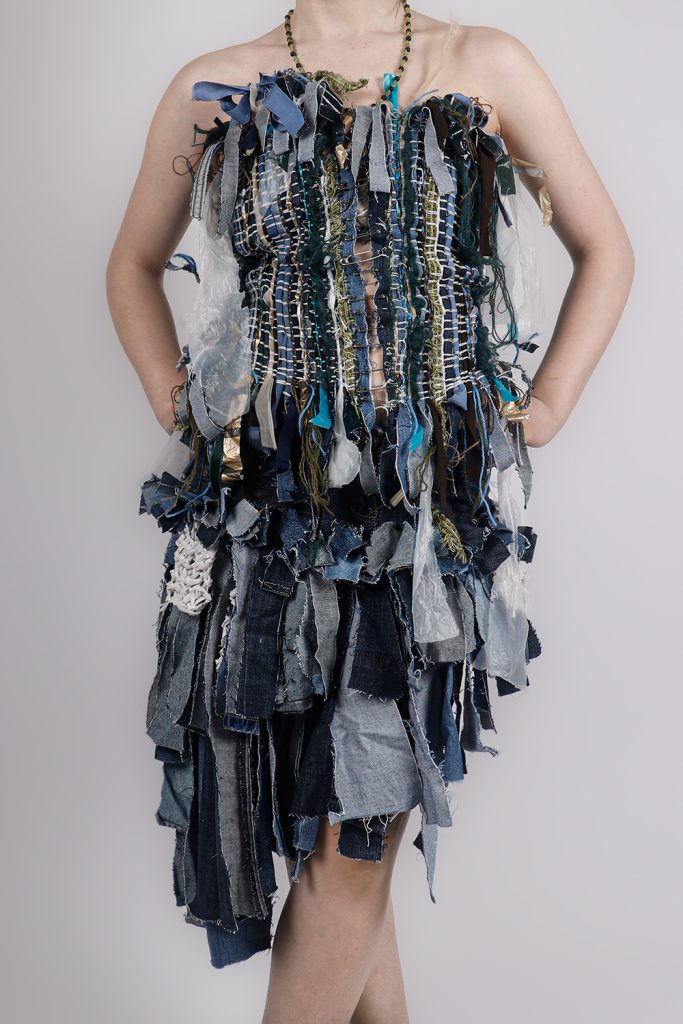
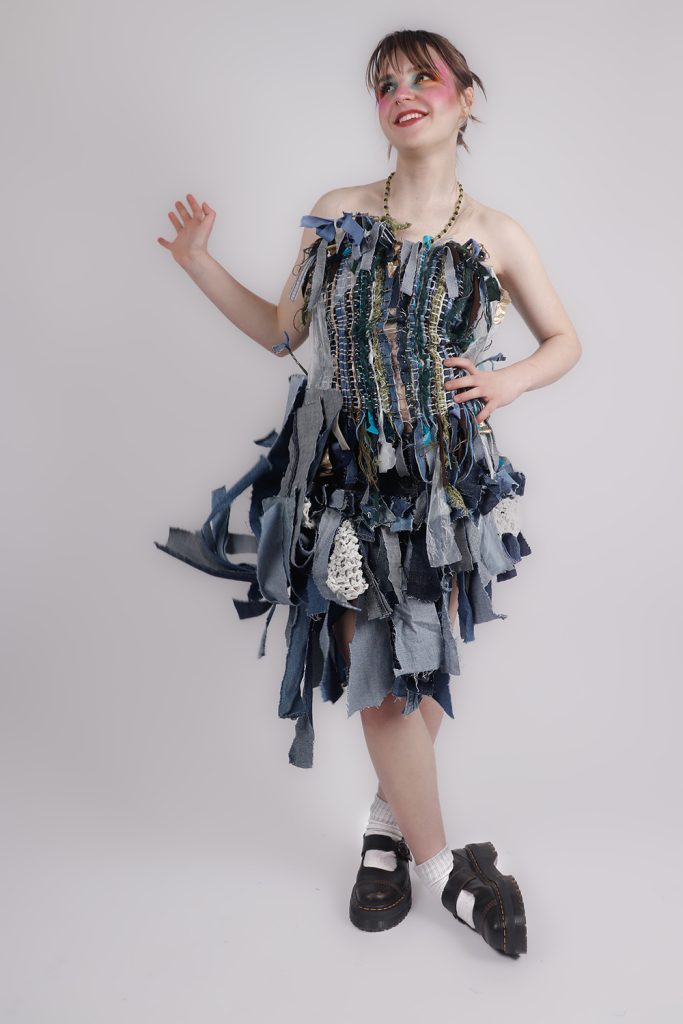
Mya Lee Round
My topic for component 2 was faces and I worked round the inspiration from famous pop artists such as Roy Lichenstein.
My piece is to overall show women empowerment by featuring girly expressions and symbolism. I worked off images I took to create the printing screens and therefore it allowed me to personalise my own work whilst adding key symbols of pop art into them.
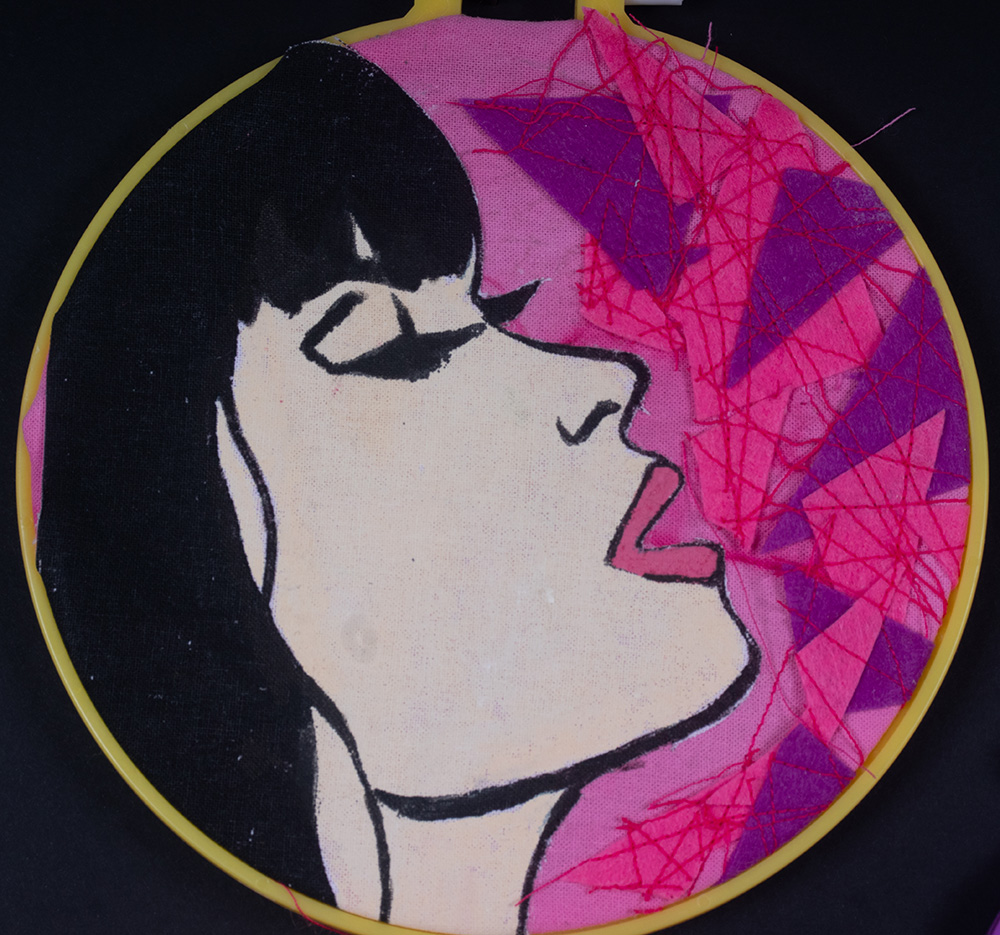
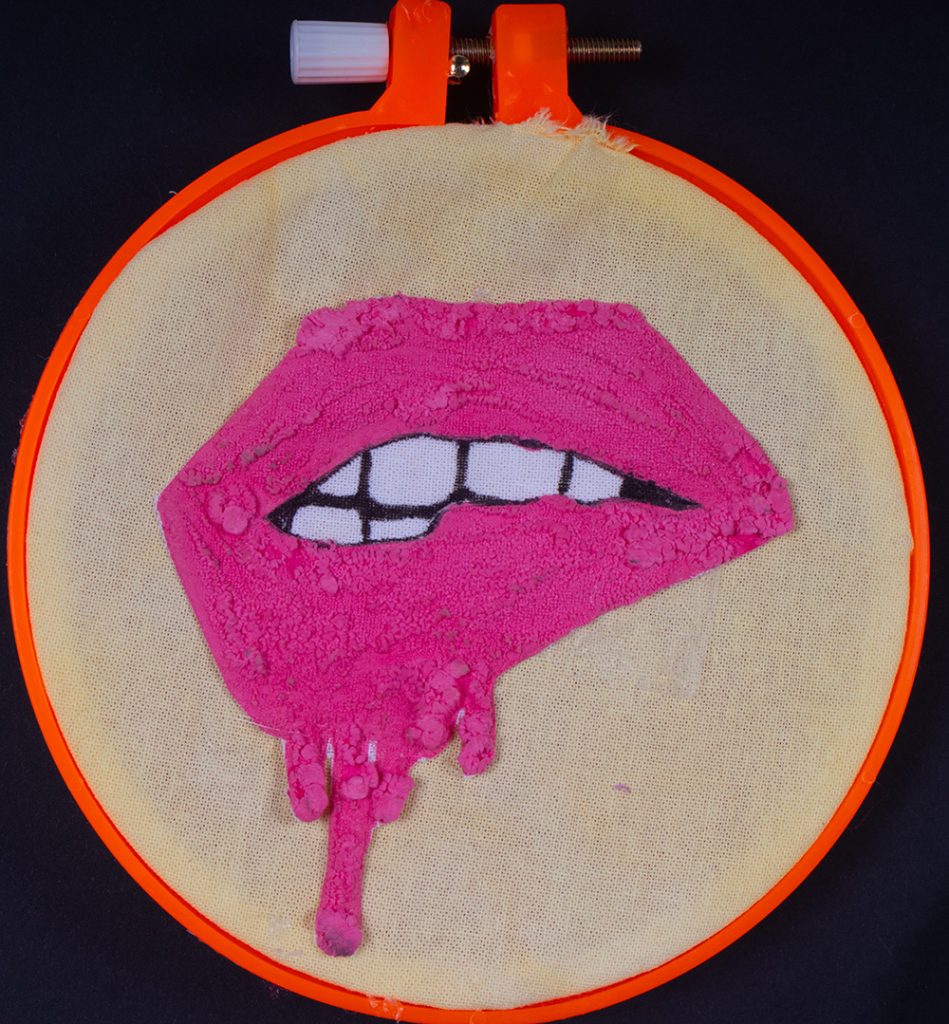
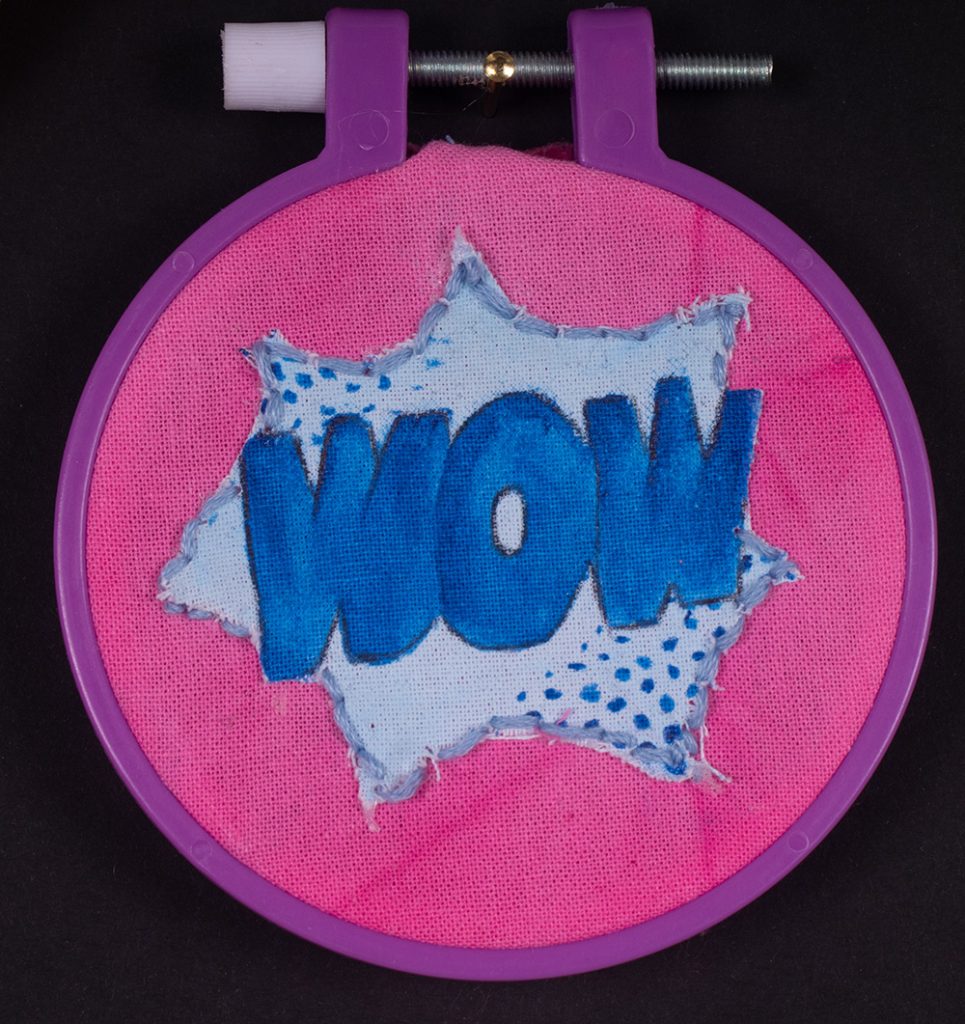
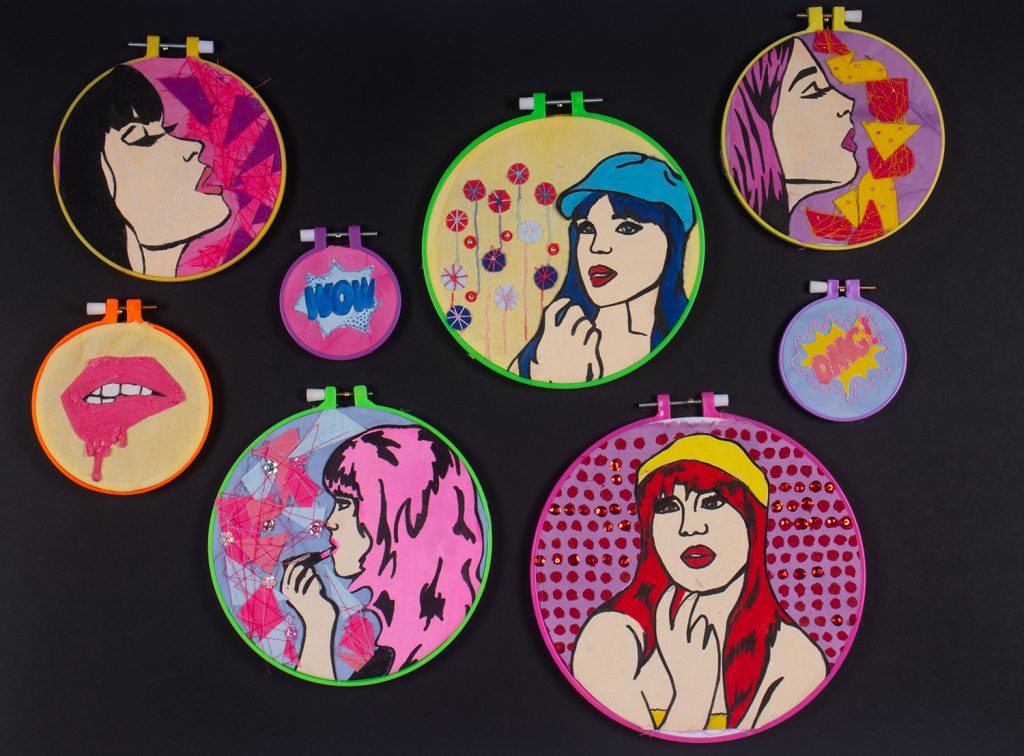
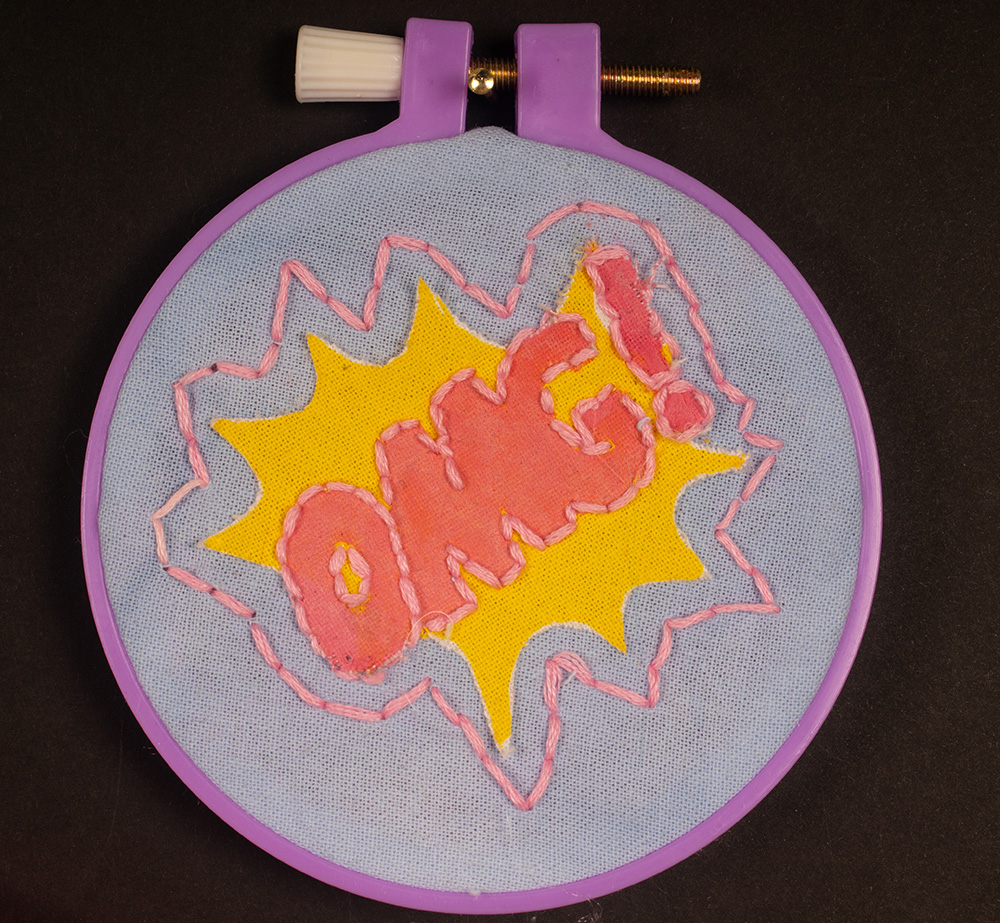
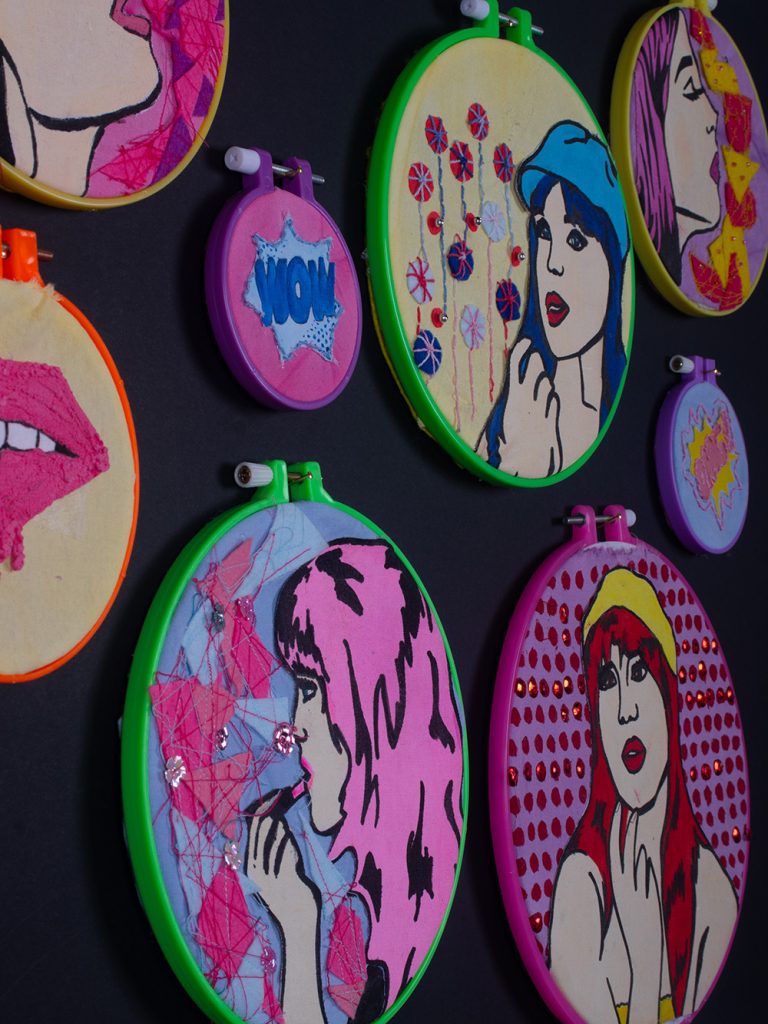
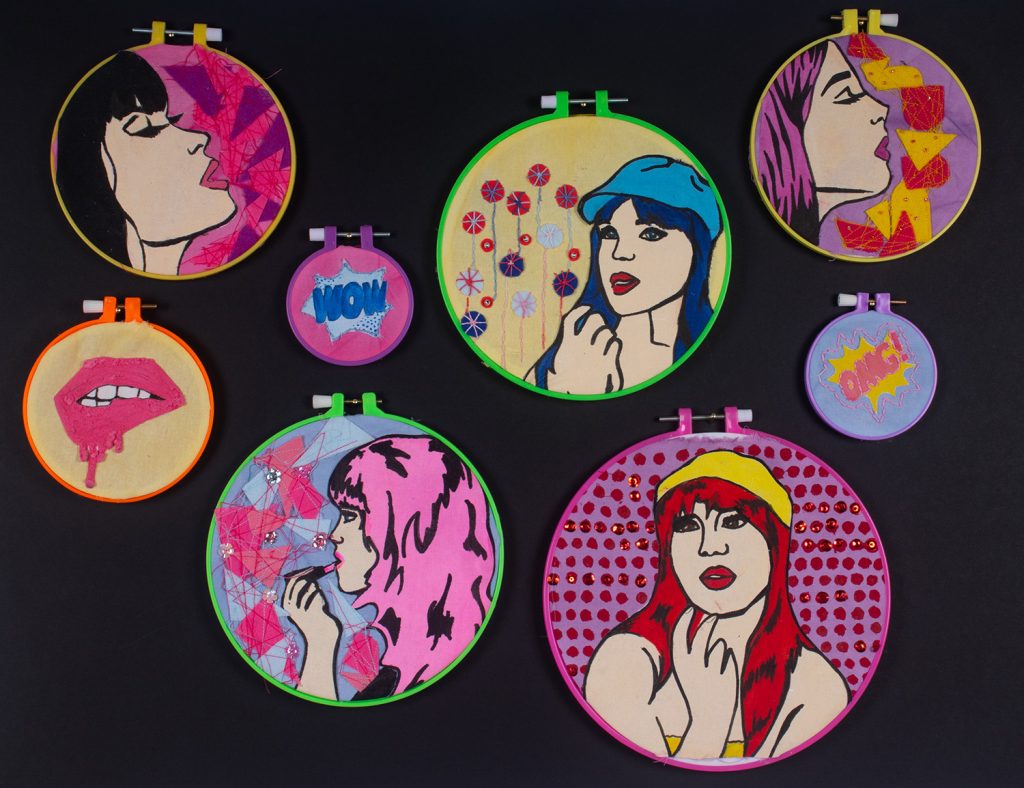
Arwen Wilson
I was attracted to the themes of ‘Make Do and Mend’ and the historical context of the usage of the phrase. After a visit to The Imperial War Museum in London I was further inspired by a book, written during World War Two, of tips on how to care for clothing. Using free-machine embroidery techniques, I incorporated some of the text from the book into my own work.
I also researched traditional patchwork techniques and experimented with a range of mixed media such as rust dye, teabags dipped in wax, and stitched paper. For my final piece I decided to focus on everyday domestic items, an apron, oven glove and peg bag. A washing line seemed a fitting way of connecting and displaying these everyday items.
Finally, I felt it was important to use materials that were upcycled or readily available at home, therefore, I combined vintage fabrics from charity shops with teabags and old dress-making patterns and used tea, coffee, red wine and rust to add subtle colour to the fabrics.
